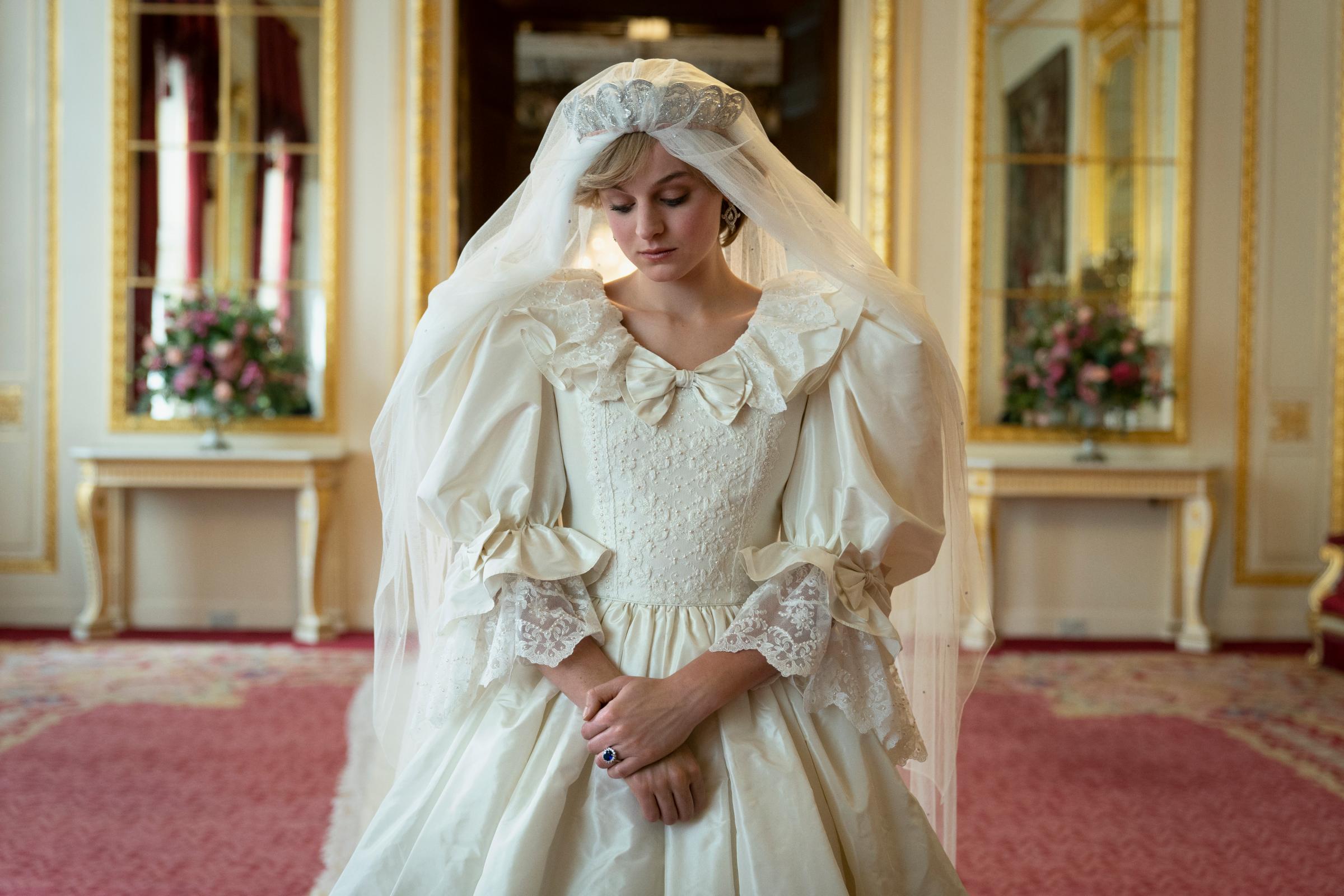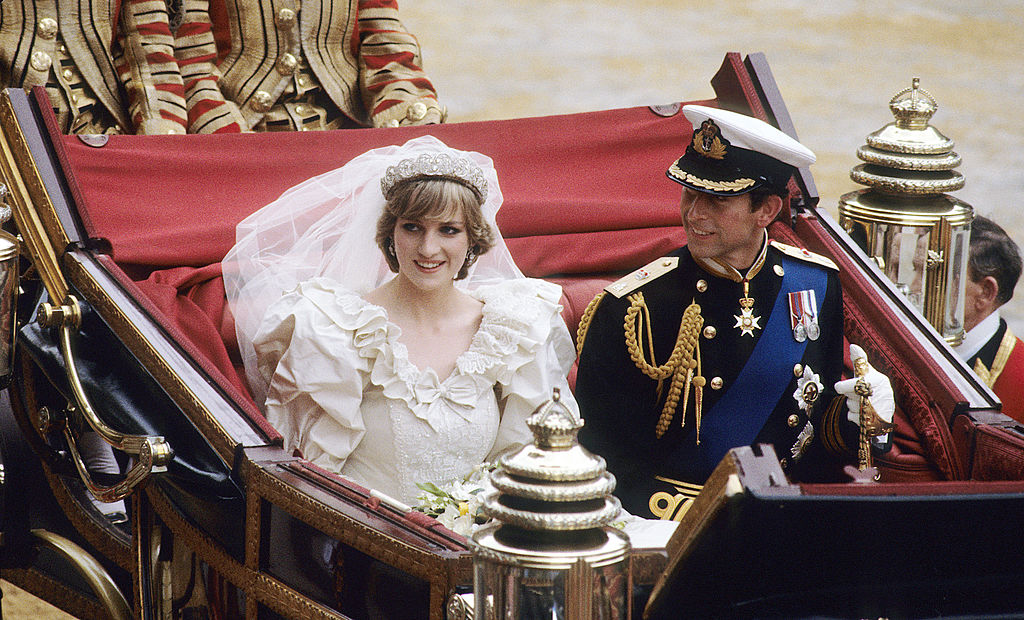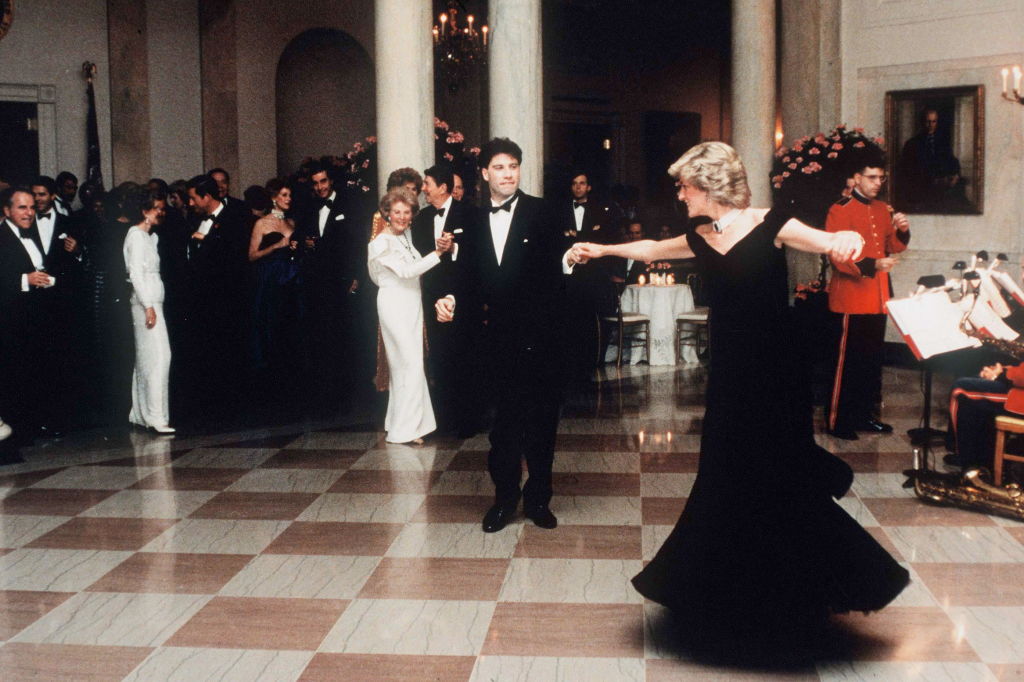Viewers of Season 4 of The Crown first meet Princess Diana, played by Emma Corrin, as a young and impish teenager, skipping around her family home dressed in a costume for a school play. It’s this moment when Prince Charles (Josh O’Connor) first meets her too, and she immediately charms him. Yet over the course of the 1980s, the royal couple’s relationship takes several turbulent turns as both embark on affairs and their unhappiness in their marriage is evident to observers around the world thanks to the speculation of the tabloid press.
The series shows the media frenzy that descended upon Diana right from the beginning of their relationship. But it never directly addresses why and how she became so popular around the world. It wasn’t unusual for the women in Charles’ life to be the center of attention in the British media; he was, after all, the heir to the British throne, and he was over 30 when he finally found a match in Diana. There was almost a sense that the public was waiting for him to get married and settle down. Yet Diana’s popularity only increased as the decade wore on, and it endured despite the acrimonious breakdown of her marriage to Charles, which culminated in divorce in 1996.
More than two decades on from her tragic death at 36 in a car crash in a Paris underpass in 1997, her legacy still occupies a unique position in the British public consciousness—and beyond. “People invested a lot of emotional intensity in her, and then were disillusioned by the fact that the royal family hadn’t changed and that it could treat this prize asset in the way that it did,” says Stephen Bates, former royal correspondent for the Guardian newspaper and author of Royalty Inc. “I think the fascination with her continues.”
One fairy-tale story after another
It seemed like a whirlwind romance—the young, beautiful ingenue swept off her feet by an older man who would one day be king. As depicted in The Crown, Diana was much younger than Charles when they first met; when they married, she was 20 to his 32. Yet fascination with royal weddings was not a new phenomenon; particularly when the newcomer to the family was a young woman. It dates back at least as far as the March 1863 celebrations for Albert Edward, Prince of Wales (later King Edward VII), and his bride, Princess Alexandra of Denmark, which coincided with the broader circulation of printed newspapers in Britain. An overwhelming number of Victorian crowds turned out in the streets of London to get a glimpse of the new princess.

This endured through the 1920s with the marriage of Queen Elizabeth II’s parents, and also with the Queen’s own wedding to Prince Philip in 1947. “It was always a big selling point for the nationals, and was regarded as a sort of fairy tale,” says Bates, who recalls reporting on the joyous street parties that took place around Oxford on the day of Charles and Diana’s wedding in 1981. As TIME reported in August 1981 from London as Charles and Diana married, the spectacle seemed like a real-life fairy tale—visually dazzling and watched by an estimated 750 million people around the world:
“A splendid Prince, his beautiful Princess, a carriage, a crowd: fantasy come to life, a dream riding in stately progress through London. Except that this moment and the ones that came before and after were real, for all to observe.”
And even while spotlights on royal weddings were nothing new, Diana did command media and public attention in a distinct way. Her youth, and the fact that she worked part-time as a nursery teacher and lived in a flat in London with her girlfriends, suggested a down-to-earth personality, which the British media amplified. Her addition to the royal family was seen as an asset for the family’s public image. “She was regarded as a coup for the royal family, much as Meghan Markle was a few years ago,” says Bates. “She was going to enliven it, rejuvenate it, refresh it and be glamorous, and proof that the royal family were not stuffy and stuck in the mud.” For Ingrid Seward, editor in chief of Majesty Magazine and author of several royal biographies, including Diana: An Intimate Portrait, Corrin’s portrayal of the young princess in The Crown is one of the most accurate she’s seen onscreen. “[Corrin] has absolutely got the essence of the young Diana, and because it’s the young Diana, it’s probably easier to capture the naivety, the innocence and the fear she felt very well.”

Diana’s status in the media and on the world stage
After the wedding, the attention on Diana did not die down; in fact, it became more intense. “No one in the Royal Family had experienced that before,” says Seward. And while the Queen too had been seen as a young and fresh face arriving to the senior leadership of the Royal Family in the 1940s, the family’s relationship with the British media had changed over the ensuing decades. Advances in technology and communications, combined with a voracious appetite for photographs of Diana that proved sure-fire sells for newspapers and magazines, led to a much more invasive and less reverential treatment of the young princess.
In February 1982, paparazzi followed Charles and Diana to the Bahamas, where they took photographs of her in a bikini while she was pregnant with Prince William. The Queen called the publication of the photographs “the blackest day in the history of British journalism.” Seward says that the monarch was so furious that she called an emergency meeting to Buckingham Palace with senior British newspaper editors asking them to call off their reporters and give the young and vulnerable Diana privacy. But they didn’t heed her plea for long.
What really broke barriers was the foreign press’ interest in Diana, propelling her onto the world stage, says Seward. The global interest in the vibrant princess certainly helped boost the Royal Family’s image abroad throughout the 1980s. As depicted in the series, Charles and Diana did visit Australia with William shortly after he was born. Crowds reacted well to the young princess, as the media made much of her charm, outfits and interactions with the public. “The princess seemed more anxious to meet the people than did her husband…the general response was, the princess looked better than she does on telly” said one Australian broadcast news report at the time, adding that Diana enjoyed making small talk and joking around with people in the crowds.
They also traveled to the U.S. together in 1985, where TIME called them “the world’s most glamorous and relentlessly observed twosome.” At the White House, they mixed with President Reagan and Hollywood stars, and Diana was famously photographed wearing a midnight blue off-the-shoulder dress and dancing with John Travolta. The “Travolta Dress,” as it later became known, was sold at auction in 2019 for £264,000 (almost $350,000). American readers wrote in to TIME to say that the couple’s appeal was universal on that particular trip, and on the couple’s arrival in Washington, TIME reported that “Diana, dressed in a radiant red suit with a white shawl collar and wearing an oversize red fez, was clearly the cynosure.”

The people’s princess
In the later stages of the 1980s and up until her death in 1997, Diana took on a more high-profile role in activism and charity work. As with historic interest in royal weddings, this wasn’t new for members of the royal family; in the latter part of the 19th century, Edward VII became a patron of and fundraised for several hospitals, charities and other worthy causes.
But Diana certainly did lend a starry appeal to amplify charitable causes, “not least because the press always wanted to photograph her,” says Bates. “Publicity of her could boost a charity’s income and bring its work to public attention.” This was evident during her 1989 solo trip to New York City, as depicted in this latest season of The Crown. Local papers talked of “Di-mania” as her arrival slowed traffic everywhere, as the princess both mingled with political elites and visited shelters for the homeless. She also visited children with AIDS at a Harlem hospital, and was photographed hugging a 7-year-old boy with the disease. At a time of virulent homophobia, when there was a great deal of stigma around HIV and AIDS and people incorrectly thought that it could be transmitted just by touching, Diana’s action was hugely significant. “After that, even the most hard- boiled of New Yorkers had to admit that Diana was a class act,” TIME commented, reporting on the event.

In 1997, just a few months before her death, Diana donned protective equipment and walked across a landmine field in Huambo, Angola. In doing so, she drew international attention to a somewhat overlooked issue and ultimately raised the profile of the work being done to clear landmines around the world; her actions are widely thought to have helped propel ongoing negotiations around the United Nations Mine Ban Treaty—a legally binding prohibition on the use, stockpiling, production and transfer of landmines, which was signed at the end of the year. Her work in this field is still hugely important to landmine survivors today, and Prince Harry has continued the family’s association with the cause, making a trip to the same part of Angola during his Africa tour last September.
The legacy of Diana
In August 1997, a car carrying Diana and her boyfriend, film producer Dodi Fayed, was speeding away from paparazzi when it crashed in a Paris underpass; Fayed and the driver died at the scene, and Diana died shortly afterward in a hospital. Jurors later ruled at an inquest into her death that Diana was “unlawfully killed” by both the reckless driving of their chauffeur and the paparazzi who were chasing her. What had started as a fairy tale ended in tragedy, and there was a public outpouring of grief and mourning in the days after her death and at her funeral.
Diana’s sudden passing significantly contributed to her legacy and the way her life has been remembered. “People couldn’t believe that she had this sort of death,” says Seward. “She became canonized almost. I think of other icons like Marilyn Monroe, but Diana seemed to take on this saint-like quality, because people only remembered the good and forgot the bad.”
Diana also had a profound impact on the Royal Family, speaking candidly in an interview with the BBC in 1995 about her marital problems with Charles, the affairs they had both been having, and how she was treated by senior royals. She also detailed that she had suffered from depression, bulimia and self-harm during her marriage in the interview, which was watched by about 23 million people. (Earlier this month, Diana’s brother Earl Spencer alleged that Martin Bashir, the BBC journalist conducting the interview, made a number of false and defamatory claims about senior royals in order to gain Spencer and Diana’s trust in advance of the interview.) Diana’s revelations were explosive claims that reshaped the boundaries between public image and private affairs that the royal family had worked hard to maintain, and inspired public disillusionment with the monarchy, according to Bates.
But she remains a significant figure for another reason: she was the mother of the future monarch, Prince William. Much was made of the fact that William proposed to Kate Middleton in 2010 with the same blue sapphire and diamond engagement ring that had previously belonged to Diana. Speaking to CNN, William said it was his way of making sure his mother didn’t miss out on his wedding day. “William is minutely observed by royal watchers here and in America to see how like his mother he is,” says Bates. “That’s something you get in all families of course, but it has a particular resonance, because people still feel they have a little slice of her in their lives.”
More Must-Reads from TIME
- Caitlin Clark Is TIME's 2024 Athlete of the Year
- Where Trump 2.0 Will Differ From 1.0
- Is Intermittent Fasting Good or Bad for You?
- The 100 Must-Read Books of 2024
- Column: If Optimism Feels Ridiculous Now, Try Hope
- The Future of Climate Action Is Trade Policy
- FX’s Say Nothing Is the Must-Watch Political Thriller of 2024
- Merle Bombardieri Is Helping People Make the Baby Decision
Contact us at letters@time.com